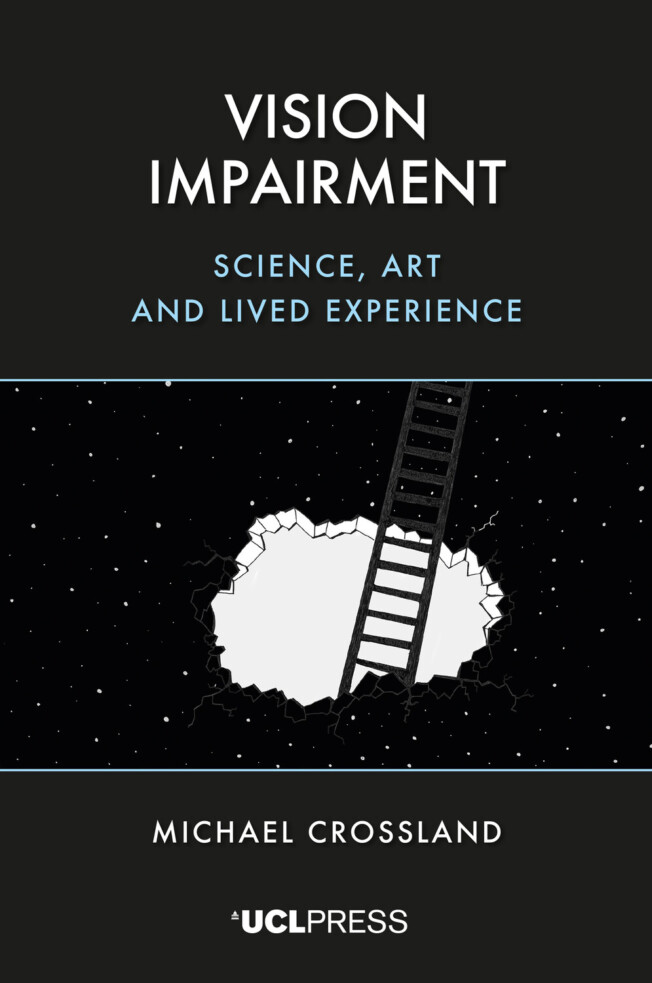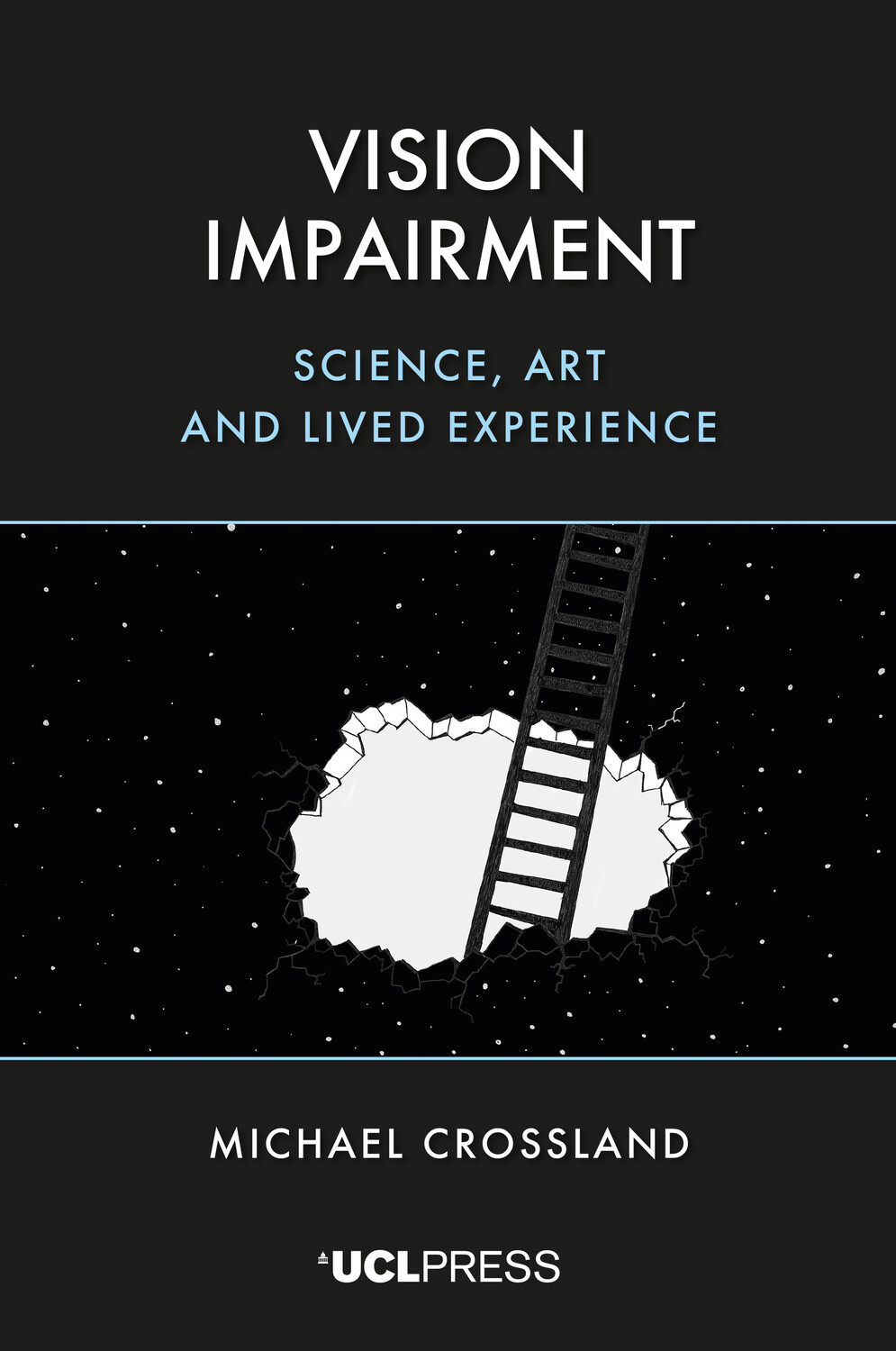
Vision Impairment
Science, art and lived experience
Michael Crossland (Author)
What is it like to go blind?
350 million people around the world live with severe vision impairment, ranging from those who can see a couple of letters on a sight chart to those who perceive no light at all. In this book we meet some of them, including artists, poets, scientists, architects, politicians, broadcasters and musicians. Together, we discuss every stage of life with vision impairment – from childhood and education to dating, employment and ageing – as well as the portrayal of blind people in literature and film, the use of technology by people with vision impairment, and the psychological effects of losing vision.
Vision Impairment also reviews the major causes of sight loss today and shows the effect of these diseases on visual function. It surveys new and emerging treatments for serious eye diseases and explores what it is like to have vision restored after decades of being blind.
Based on Michael Crossland’s extensive work in children’s and adults’ low vision clinics, and his 20 years of research into vision impairment, the book blends individual stories, key research findings and the most recent scientific discoveries to present an informative yet optimistic overview of living with sight loss.
Praise for Vision Impairment
‘The key strength of this book is how scientific concepts around ophthalmology, vision science and sight loss are brought to life by letting patients explain what these concepts mean to them. This is not a book that has been written “about” patients; it has been written “with” them. In this sense, it is very much original, and I enjoyed reading it tremendously.’
Keziah Latham, Anglia Ruskin University
‘fascinating, sometimes moving, account — mixing ophthalmology with the stories of his patients and many others — reveals that life with vision impairment can be “just as rich and rewarding as life with 20/20 vision”.’
Nature
List of figures
List of tables
Preface
Acknowledgements
1 What is blindness?
2 Swallowed by darkness: art and vision impairment
3 The visible deterrent: employment and education with vision impairment
4 Supernoses and birdlistening: other senses in vision impairment
5 Half the world disappears: brain-related blindness
6 The heinous sin of self-pollution: guilt, denial and the psychology of blindness
7 Look with thine ears: travelling and dating with vision impairment
8 The end of blindness?
Epilogue
Bibliography
Index
DOI: 10.14324/111.9781800086227
Number of illustrations: 14
Publication date: 01 February 2024
PDF ISBN: 9781800086227
EPUB ISBN: 9781800086258
Hardback ISBN: 9781800086241
Paperback ISBN: 9781800086234
Michael Crossland (Author) 
Michael Crossland is an optometrist and Senior Research Fellow in Ophthalmology at UCL.
‘fascinating, sometimes moving, account — mixing ophthalmology with the stories of his patients and many others — reveals that life with vision impairment can be “just as rich and rewarding as life with 20/20 vision”.’
Nature
‘The key strength of this book is how scientific concepts around ophthalmology, vision science and sight loss are brought to life by letting patients explain what these concepts mean to them. This is not a book that has been written “about” patients; it has been written “with” them. In this sense, it is very much original, and I enjoyed reading it tremendously.’
Keziah Latham, Anglia Ruskin University
Related titles
Vision Impairment
Science, art and lived experience
What is it like to go blind?
350 million people around the world live with severe vision impairment, ranging from those who can see a couple of letters on a sight chart to those who perceive no light at all. In this book we meet some of them, including artists, poets, scientists, architects, politicians, broadcasters and musicians. Together, we discuss every stage of life with vision impairment – from childhood and education to dating, employment and ageing – as well as the portrayal of blind people in literature and film, the use of technology by people with vision impairment, and the psychological effects of losing vision.
Vision Impairment also reviews the major causes of sight loss today and shows the effect of these diseases on visual function. It surveys new and emerging treatments for serious eye diseases and explores what it is like to have vision restored after decades of being blind.
Based on Michael Crossland’s extensive work in children’s and adults’ low vision clinics, and his 20 years of research into vision impairment, the book blends individual stories, key research findings and the most recent scientific discoveries to present an informative yet optimistic overview of living with sight loss.
Praise for Vision Impairment
‘The key strength of this book is how scientific concepts around ophthalmology, vision science and sight loss are brought to life by letting patients explain what these concepts mean to them. This is not a book that has been written “about” patients; it has been written “with” them. In this sense, it is very much original, and I enjoyed reading it tremendously.’
Keziah Latham, Anglia Ruskin University
‘fascinating, sometimes moving, account — mixing ophthalmology with the stories of his patients and many others — reveals that life with vision impairment can be “just as rich and rewarding as life with 20/20 vision”.’
Nature
‘fascinating, sometimes moving, account — mixing ophthalmology with the stories of his patients and many others — reveals that life with vision impairment can be “just as rich and rewarding as life with 20/20 vision”.’
Nature
‘The key strength of this book is how scientific concepts around ophthalmology, vision science and sight loss are brought to life by letting patients explain what these concepts mean to them. This is not a book that has been written “about” patients; it has been written “with” them. In this sense, it is very much original, and I enjoyed reading it tremendously.’
Keziah Latham, Anglia Ruskin University
